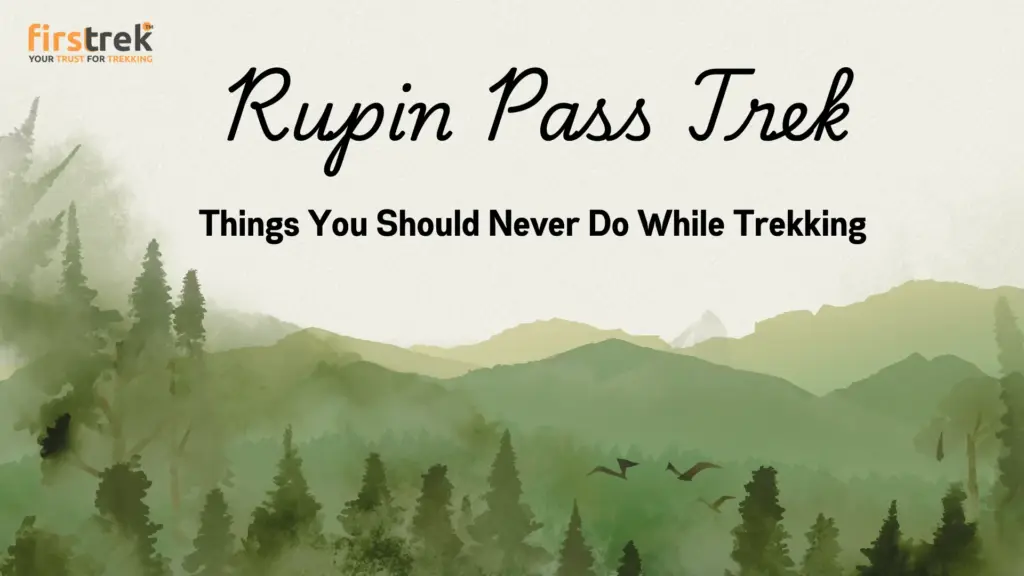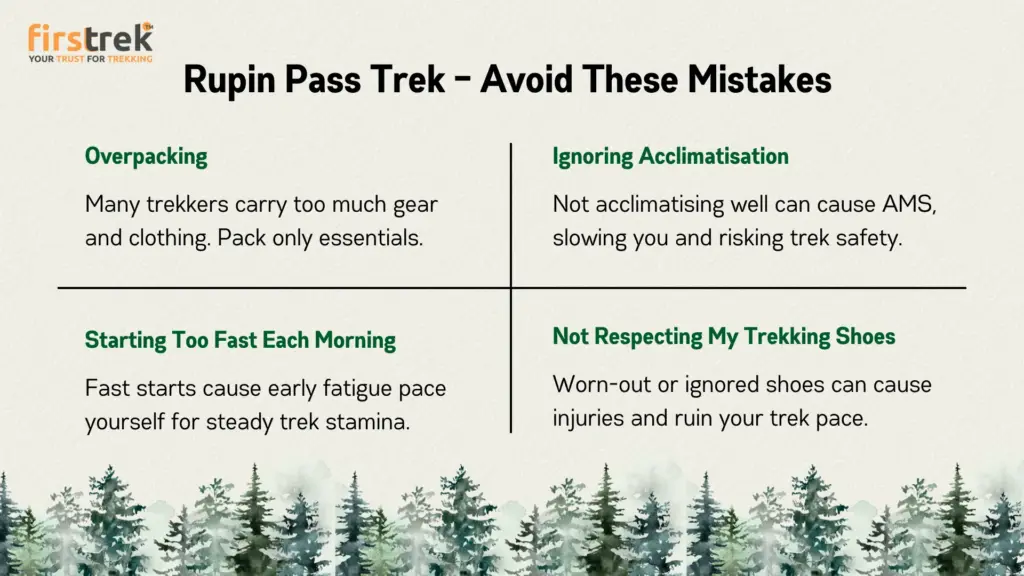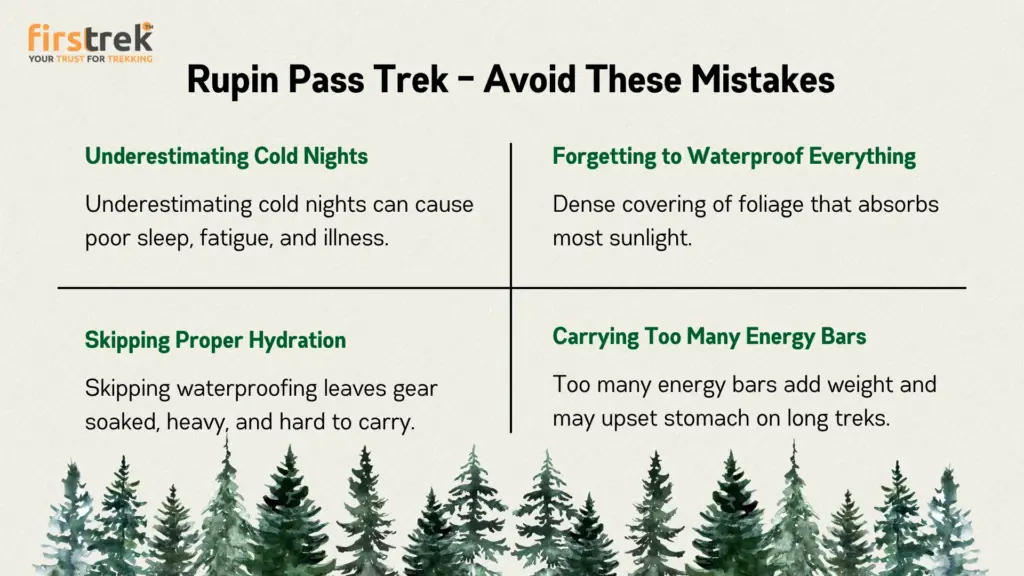
Top 10 Mistakes to Avoid during Rupin Pass Trek
In my imagination, I was ready for the Rupin Pass Trek everything, snowfields, high-altitude passes, long walking days, was prepared for me. I read dozens of blogs, watched YouTube videos, and even practised cardio for weeks. Believe me, the mountains would always humble one.
As I trudged from Dhaula to Sangla, I realised that some mistakes were unavoidable for an ill-fated first-timer-they make the best teachers by hindsight. These are the top 10 mistakes I committed on the Rupin Pass Trek and how they can teach one to make the journey smoother.

1. Overpacking Like I Was Moving House
I packed way too much clothing, snacks, and gadgets. By Day 2, my shoulders felt like they were married to something like a mini-fridge. Half of those “essentials” never even came out of my bag.
Tip: Pack light. Three pairs of trek pants, a couple of t-shirts, one down jacket, and layering essentials are more than enough. The mountains don’t care about your fashion sense.
2. Ignoring Acclimatisation
I underestimated the altitude. Climbing towards Jiskun on Day 3 left me light-headed and nauseated. It must be exhaustion, I thought; AMS was knocking at the door.
Tip: Walk slowly, hydrate constantly, and let your body adjust. Don’t race others; it’s not a competition.
3. Starting Too Fast Each Morning
My first reaction was that the minute my trek leader shouted, “Let’s go,” he had the right call. I’d be panting and lagging by noon.
Tip: Start slow, keep a rhythm, and save energy for the last leg. Remember, it’s a marathon, not a 100-meter dash.

4. Not Respecting My Trekking Shoes
I borrowed shoes from a friend. “They’ll do the job”, big mistake. By Day 4, blisters the size of coins lined the insides of my feet, and every step felt like walking over fire.
Tip: Get a good pair of trekking shoes and break them in weeks before the trek. Your feet are your lifeline.
5. Underestimating Cold Nights
I thought one bag was enough, but it was freezing all night in Upper Waterfall at 13,000 feet, and I couldn’t sleep.
Tip: Always carry an extra thermal layer and a fleece. Nights in the Himalayas are hell, even in summer.
6. Forgetting to Waterproof Everything
My backpack was not rainproof, and when the afternoon showers beat upon the earth, my clothes turned into shrivelled, soggy masses.
Tip: Use rain covers for your bag and pack essentials in plastic or dry bags. A little waterproofing would save you from misery.

7. Skipping Proper Hydration
Being cold, I didn’t drink much water, thinking I wasn’t sweating much. Result: We experienced headaches and tiredness upon reaching Rati Pheri.
Tip: But the secret is to sip small amounts regularly. Hydration keeps altitude sickness at bay.
8. Carrying Too Many Energy Bars
I carried about 20 protein bars with me, as if I were trekking for a month. By the time I reached Sangla, I had grown to hate the look of those things.
Tip: Carry a mix of snacks, including small amounts of dry fruits, chocolates, and maybe a few bars. Variety keeps your energy (and mood) up.
9. Not Preparing Mentally for the Long Haul
Rupin Pass is not all walking. It is also about loitering through drudgery: endless climbs and steep descents where one’s body tells you to stop, and you scream, ‘keep pushing’. Mentally, I had not prepared myself for what was essentially a mindset that could not be forced.
Tip: Before the trek, build up endurance with long hikes. More importantly, train your mind to embrace discomfort. The pass goes to those who are tenacious.
10. Forgotten Just to Look Around
While I “struggled to complete the trek,” I often forgot to pause and admire the beauty: waterfalls thundering down cliff faces, wildflowers carpeting the Dhanderas Thatch, or light playing across snow peaks.
Tip: Slow down. Take breaks. Breathe the Himalayas out. The journey is just as beautiful as the summit.
Conclusion
Crossing Rupin Pass marked one of the most tumultuous and beautiful experiences of my life. Yes, I made mistakes-small ones, painful ones-but all taught me how to trek better, live simpler, and have a deeper respect for the mountains.
So, Rupin Pass, lighten the load, listen to the body’s cues, and always stop sometimes to take in the sights. That’s what it’s about. After all, it’s not how quickly you reached Sangla. It’s about the stories you carry back.